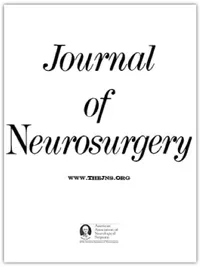
Trigeminal Neuralgia Treatment in New York City | Expert NYC Neurosurgeon
Understanding Trigeminal Neuralgia: Causes, Symptoms, and Treatment Options
Trigeminal neuralgia (TN)—sometimes called tic douloureux—is a chronic facial pain condition caused by irritation of the trigeminal nerve, which carries sensation from the face to the brain. TN is known for sudden, electric shock–like pain on one side of the face (often the cheek, jaw, teeth, or gums). Attacks can be triggered by light touch, talking, brushing your teeth, shaving, or even a breeze.
What causes trigeminal neuralgia?
Neurovascular compression: A small artery or vein gently pressing on the nerve near the brainstem (the most common cause in “classical” TN).
Secondary causes: Less commonly, multiple sclerosis, prior injury, or a tumor can affect the nerve.
Who gets TN? It can occur at any age but is more common after age 40 and slightly more common in women.
Common symptoms
Sudden, shock-like facial pain lasting seconds to two minutes
Pain in the cheek, jaw, teeth, or gums, usually one-sided
Triggerable by light touch (toothbrushing, speaking, wind)
Pain-free intervals between attacks; some people develop a dull ache between shocks
How trigeminal neuralgia is diagnosed
Diagnosis is based on your symptoms and exam, supported by high-resolution MRI to:
Confirm whether a blood vessel is contacting the nerve, and
Rule out secondary causes (e.g., multiple sclerosis, tumor)
Preferred MRI protocol typically includes:
3D T2 cisternography (CISS/FIESTA/DRIVE) to see the nerve and vessels
Time-of-Flight (TOF) MRA to map arteries
Post-contrast 3D T1 to assess for inflammation or tumor
Philosophy of Care
Empathy. Expertise. Evidence.
Dr. Ramesh P. Babu’s approach is patient-centered and stepwise. He starts with the least invasive effective options and recommends procedures only when appropriate. Every plan is tailored to your goals, medical history, and imaging.
Clear diagnosis first: Focused history, exam, and TN-specific MRI
Shared decisions: You’ll understand why a treatment is recommended and what to expect
Continuity: Close follow-up to fine-tune medications, monitor results, and support long-term relief
Access to care: Second opinions, coordination with your dentist/neurologist, and options for patients who cannot travel
Educational Background
Why Dr. Babu Is a Trusted Expert
NYC Neurosurgeon with decades of experience treating trigeminal neuralgia and facial pain
NYC neurosurgeon with decades of experience treating trigeminal neuralgia, facial pain, and skull base tumors
M.Ch in Neurosurgery – NIMHANS, Bangalore (India’s premier neuroscience institute)
Neurosurgery Residency – NYU Medical Center under Dr. Joseph Ransohoff
Fellowship in Microvascular & Skull Base Surgery – University of Pittsburgh Medical Center (UPMC), mentored by Dr. Peter Jannetta (pioneer of microvascular decompression) and Dr. Laligam Sekhar
Advanced International Training – Nordstadt Clinic, Hannover under Prof. Majid Samii; and NHNN, Queen Square, London
Director of Neurosurgery – BronxCare Health System; affiliated with Lenox Hill Hospital (Northwell) and NYC Health + Hospitals / South Brooklyn Health
Medical Advisory Board Member – Facial Pain Association (FPA); former member of the Board of Directors
Recognized for managing complex and recurrent trigeminal neuralgia, including patients who have not improved after prior treatments. This unmatched depth of training and leadership means you’ll be evaluated by a surgeon who understands every option—from optimized medication plans to the full spectrum of minimally invasive procedures and microvascular decompression (MVD)—and who can match the right treatment to your unique case.
Services & How to Get Started
Comprehensive Evaluation
Detailed review of your pain pattern, triggers, prior dental/ENT work-ups, and medications
High-resolution MRI protocol (3D T2 CISS/FIESTA, TOF MRA, post-contrast T1) to guide treatment decisions
Clear discussion of whether your pattern fits classical TN and what that means for your options
Medical Management
Evidence-based first-line medications (carbamazepine or oxcarbazepine) with careful dose titration and monitoring
Alternatives when needed: lamotrigine, baclofen, gabapentin/pregabalin
Safety screening (e.g., HLA-B*15:02 when appropriate) and coordination with your primary care/neurology team
Minimally Invasive Procedures
Radiofrequency rhizotomy (precise heat to disrupt pain fibers)
Balloon compression or glycerol rhizotomy (mechanical/chemical approaches to quiet the nerve)
Stereotactic radiosurgery (Gamma Knife) (incision-less outpatient option)
Microvascular Decompression (MVD)
Advanced microsurgery to separate the offending vessel from the trigeminal nerve with a protective cushion
Aims for the most durable relief in suitable candidates while preserving nerve function
Ongoing Care & Support
Medication adjustments, procedure follow-up, and long-term prevention strategies
Collaboration with dentists, neurologists, and pain specialists as needed
Second opinions and guidance for patients with complex or recurrent TN
“Long-term outcome after operation for trigeminal neuralgia in patients with posterior fossa tumors”
Fred G. Barker II, M.D., Peter J. Jannetta, M.D., Ramesh P. Babu, M.D., Spiros Pomonis, M.D., David J. Bissonette, P.A.-C., and Hae Dong Jho, M.D., Ph.D.
During a 20-year period, 26 patients with typical symptoms of trigeminal neuralgia were found to have posterior fossa tumors at operation. These cases included 14 meningiomas, eight acoustic neurinomas, two epidermoid tumors, one angiolipoma, and one ependymoma. The median patient age was 60 years and 69% of the patients were women. Sixty-five percent of the symptoms were left sided. The median preoperative duration of symptoms was 5 years. The distribution of pain among the three divisions of the trigeminal nerve was similar to that found in patients with trigeminal neuralgia who did not have tumors; however, more divisions tended to be involved in the tumor patients. The mean postoperative follow-up period was 9 years.
At operation, the root entry zone of the trigeminal nerve was examined for vascular cross-compression in 21 patients. Vessels compressing the nerve at the root entry zone were observed in all patients examined. Postoperative pain relief was frequent and long lasting. Using Kaplan—Meier methods the authors estimated excellent relief in 81% of the patients 10 years postoperatively, with partial relief in an additional 4%.
Looking for a Trigeminal Neuralgia Specialist Near You?
Dr. Ramesh Babu is a leading neurosurgeon in New York City, specializing in the surgical and medical management of trigeminal neuralgia and facial pain.
Patients from Manhattan, Brooklyn, Queens, and the greater Tri-State area trust Dr. Babu for advanced, compassionate care and long-term relief.
Use the form below to contact our NYC office to schedule a consultation.


